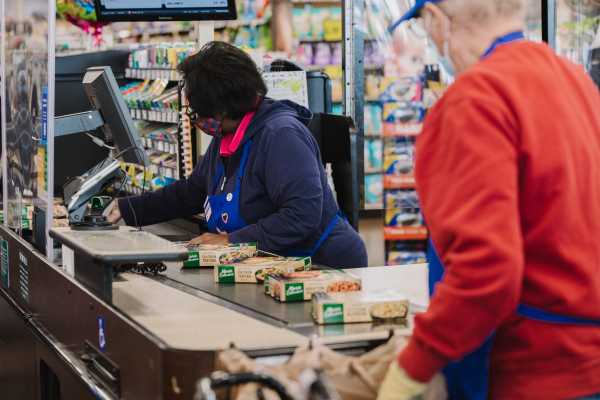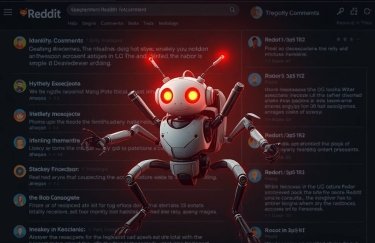
This story is part of a group of stories called

Rising prices are definitely a thing right now, and it’s hard not to let a little bit of worry creep in. The United States isn’t experiencing 1970s-level spiraling inflation, but for people leaving the grocery store or a restaurant, the receipt is often a little bit higher than it used to be.
The consumer price index, which measures what consumers pay for goods and services, rose by 6.2 percent from a year ago in October, according to the Bureau of Labor Statistics, the quickest annual clip it’s risen since 1990. Over the course of the month, prices crept up by 0.9 percent. The data shows prices are up almost everywhere, including gasoline, energy, shelter, food, and new and used cars and trucks. Among the few price indexes to decline were airline fares and alcoholic beverages.
October’s inflation numbers came in above economists’ expectations, and to politicians, the media, and other observers, they are a bit jarring — especially those who have been arguing that much of the current inflation in the economy is temporary.
There are a lot of open questions in the pandemic economy, including what’s going on with supply chains and labor, and inflation remains an issue no one is quite sure how to solve. Regardless of what the experts say, for regular people, the economic landscape can be a little nerve-wracking, especially when it comes to prices. Inflation makes people feel bad about the economy, even when there is plenty to feel good about, too.
I reached out to Claudia Sahm, a senior fellow at the Jain Family Institute and former Federal Reserve economist, to ask how to parse the latest inflation numbers. Sahm isn’t an inflation hawk and has for some time pushed back against fearmongering on the issue, but she acknowledged that the October situation isn’t good.
Wages aren’t broadly keeping up with inflation across all jobs, though they are in some sectors, such as hospitality. However, Sahm notes, the economic situation — and pandemic situation — is much better for many people this year than it was last. She’s not hitting the panic button on prices, but she worries about the implications for the reconciliation bill in Congress, and emphasizes that the Fed is paying attention to what’s going on.
Our conversation, edited for length and clarity, follows.
So the October inflation numbers were not good.
Legitimately, October wasn’t a good month. Prices really across the board — with some exceptions — rose in October. The increase that we saw in total aggregate prices was as large as the big increases that we saw early in the summer.
What had happened between, say, June and October was that the level of prices had stayed high. We haven’t seen outright declines in prices, but inflation had been stepping down, which has been the forecast, the expectation, of Fed officials, the White House, myself personally, a lot of other professional forecasters. It hasn’t stepped down as fast — the peak earlier this year was much higher than I certainly expected. But this is a step backward. Inflation moved back up, so that means off of the high level of prices, we have moved up, again, pretty notably.
CPI is over 6 percent year-over-year. This is not good news.
Is there a broader context you think people should pay attention to here?
There’s a good, bad, and ugly of inflation. There are good reasons that inflation comes down, like we start working out supply chains and labor shortages. And there are bad reasons, and my bad case is Covid-19 comes back and we get scared and pull back. Prices are supply and demand. We look at lower inflation and say, “Yay, this is a good thing.” But lower jobs is bad.
Covid has been the root of all evil through this entire pandemic. It comes, slows some, then it comes back with a surge, then it slows, then it comes back with a surge. Just like you can’t draw a straight line through the Covid cases and the Covid deaths, you cannot draw a straight line through the economic recovery. We are pointed in the right direction, particularly after the vaccines came out, but not every month.
How does this tie into what else is happening in the economy?
People are exhausted. Workers, businesses are exhausted. We are moving in the right direction, but it is painful. One of the pain points is higher prices. Another big pain point is not having a job. Inflation is felt more broadly because the unemployment rate is back down. It’s still above where it was before, but we’re really moving on that.
Far fewer people are in these dire straits than were happening earlier in the pandemic, but everybody is facing some price increases. But the vast majority of Americans fill up their cars with gas, and they notice it’s a lot higher. It’s a much more diffuse pain, it’s not as severe, but people hate inflation. Inflation has both a reality and a life of its own. It’s just like taxes — taxes are something you pay, but they’re something we all just broadly hate.
Both because jobs have been coming back and also because the federal government put out a lot of economic relief, people — especially those who are at the very top of the heap — have, on average, enough money to pay those extra prices in the majority of cases.
When you look at the price at the pump, you think, “Ahhh,” and you’re staring at it. But if you’re staring at it, that means you put gas in your car. And if you look at the consumption numbers adjusted for inflation, these things have gone up, and that is because people have more money. Prices are rising, but their bank accounts rose faster.
There’s a hardship, but when you look back to the Great Recession, where there was much less relief, real consumer spending did not rise like we are seeing this year, and inflation, frankly, it was rising faster. That was worse. Inflation wasn’t as high as it is now, but at the end of the day, it’s, “Can you eat?” not just, “How much did you pay for the food?”
How does all the government support during the pandemic play into this?
Low-income people spend a bigger part of their budget on necessities, food, on housing, on medical care. It puts a squeeze on them if you hold income constant. If you have more money in their pocket, it really does help. The stimulus, for a family of four, it was almost 20 percent of median family income in all three rounds. Low-income people have more in liquid assets, more in wealth, than they have had in a very, very long time.
It’s amazing, because we are coming out of the worst recession in living memory, a massive global pandemic.
Inflation, it’s not good, I’m not sugarcoating it, but there was a lot of good done. The American Rescue Plan [the stimulus bill signed into law by President Joe Biden earlier this year] was the absolute best policy, particularly in an environment with high inflation. You look across the world in developed countries, they all have inflation. And you know what the difference is in the United States? We put thousands and thousands of dollars in people’s pockets at the beginning of the year.
It really made a big difference to people’s lives. The fact that higher inflation is eating away at the wealthy, the lenders, the bond market people, I have no sympathy. I loved the packing plant that was complaining in the news because they couldn’t hire enough workers. Maybe if you hadn’t killed so many of your workers, right?
Inflation is too high, it’s causing problems, but it’s not our biggest problem right now. Covid is.
There’s a trope about inflation that the Fed’s behind the curve; inflation hawks say the same thing over and over again. We are not living the same moment as the ’70s, the ’50s. There was no global pandemic. If that’s how you’re going to approach this, something is missing in the model, and frankly, it just wastes so much time. There are real problems, there are real solutions, and they are going to tank that legislation in Congress.
The inflation debate has already clearly cut down the size of the kids, care, and climate legislation, as I like to call the [Build Back Better reconciliation bill]. The midterms are coming. We will not have a united government; they will not pass anything like this again for years. And inflation will come back down. Even if it stays above 2 percent, you’re going to say climate change, children, education, and housing are less important?
It’s not about inflation, it’s about the size of government. It’s not about the taxes, it’s not about the debt, it’s about how much government should be active in people’s lives. I feel like economists are the accessories to the murder of good long-term policy, and it’s frustrating.
It’s a tough line to walk, because I don’t want to pretend like prices haven’t risen a lot. I believe in fact.
So I hear you that there are a lot of other things going on in the economy, but people really do feel inflation. People see the numbers — my mom’s been complaining her Christmas baking is more expensive this year. How worried should normal people be? Because a lot of them are starting to feel a little panicked.
You learn a lot as a policy expert if you engage with people, and I listen because I cannot tell someone how to feel. I cannot tell someone what should you expect in the future. I can’t help but bring in, “Hey, but what about those checks? And it’s the pandemic, and the supply chain, and prices fell for a long time, we’ll get back there. Gas prices will go down.” You can bring facts into it, but I can’t tell them how to feel.
And, frankly, what we are seeing, I’m not surprised. If you told me inflation would be 6 percent year-over-year right now and asked me what the University of Michigan consumer sentiment survey would look like, I could tell you. People really dislike inflation. There are a lot of people, particularly older people, who have lived through periods of high inflation where it got out of control and policymakers were asleep at the wheel. They haven’t seen what Jay Powell’s Fed is going to do.
Most people don’t trust government at all, and a lot of people don’t trust facts either; we have lots of problems here. If a politician you look up to or a talking head on the news tells you that you should be freaking out about inflation, it’s going to get worse.
I do worry about an inflation spiral, but in the Michigan survey, they ask about the buying conditions for large household durable goods, big household purchases. It is at its lowest level, at least going back decades and decades.
That made me so relieved, because when I’m thinking about this inflation spiral, in countries that experience high and rising inflation, what fuels that spiral is that people look at the high and rising prices, and you ask them if they should buy now, and they say yes, because prices will be higher. If I ask you if it’s a good time to buy and you say no, that means you’re not going to start hoarding things and creating more price pressure.
People hear inflation hawks, and that’s where the fear goes — in the economy, the trust in government, the questions about where we are headed. But for me, there’s this disconnect, because yes, prices are bad, but we helped a lot of families.
It’s a tough time right now. Precarious is too strong of a word, because I don’t see the makings of an inflation spiral — vaccines are coming out, Covid is coming down. But some days it’s a good day, and some days it’s a bad day. And sometimes it’s really good — half a million jobs really good. Other times, it’s inflation rising almost a percent month-over-month — really bad.
As people head into the holidays and start to look at prices, a lot of them are just going to think, what in the world is going on? What would you say to normal people on how to think about inflation right now as they go to the store or the gas station or shop for presents? To people who worry Christmas is going to be a lot more expensive?
There are families who are going to be able to buy Christmas presents and who have been able to fill their gas tanks and get to work this year who in 2019 couldn’t. We have gotten a lot of money to a lot of people who have very little. We have gotten money, frankly, to 80 percent of households. That’s good; universal makes it more popular.
We have millions of families that are supported by people who do not work at a living wage, who do not have financial security, they had nothing in the bank. A lot of them have something in the bank now. Their kids are going to have Christmas.
The other thing is that we get to see our family for Christmas this year. I would have paid a lot of money last year to go have Christmas with my family, and there was no amount of money I could pay, because my parents are older and they weren’t vaccinated.
If I have to buy my son one Gameboy game instead of two this year, well, Grandma’s going to get to watch him open it, and that’s worth a lot. A lot of people are going to have a better Christmas than last year, and there are going to be a lot of families who have a better Christmas in 2021 than they did in 2019.
You can’t look at these bank account numbers that are higher now and say, “Oh, it’s going to be the worst Christmas ever.” For people who lost loved ones because they died of Covid in 2021, that’s going to be a really bad Christmas. But that has nothing to do with the toys in the store and the price tags attached to it.
Will you support Vox’s explanatory journalism?
Millions turn to Vox to understand what’s happening in the news. Our mission has never been more vital than it is in this moment: to empower through understanding. Financial contributions from our readers are a critical part of supporting our resource-intensive work and help us keep our journalism free for all. Please consider making a contribution to Vox today to help us keep our work free for all.
Sourse: vox.com






